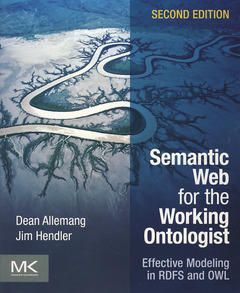Semantic Web for the Working Ontologist (2nd Ed.) Effective Modeling in RDFS and OWL
Auteurs : Allemang Dean, Hendler James

Programmers, web developers, and application developers in numerous fields, including health care, finance, artificial intelligence, engineering, national intelligence, and enterprise architecture; technologists and graduate students in computer science
Jim Hendler is the Tetherless World Senior Constellation Chair at Rensselaer Polytechnic Institute, and has authored over 200 technical papers in the areas of artificial intelligence, Semantic Web, agent-based computing, and web science. One of the early developers of the Semantic Web, he is the Editor-in-Chief emeritus of IEEE Intelligent Systems and is the first computer scientist to serve on the Board of Reviewing Editors for Science. In 2010, he was chosen as one of the 20 most innovative professors in America by Playboy magazine, Hendler currently serves as an "Internet Web Expert" for the U.S. government, providing guidance to the Data.gov project.
- Updated with the latest developments and advances in Semantic Web technologies for organizing, querying, and processing information, including SPARQL, RDF and RDFS, OWL 2.0, and SKOS
- Detailed information on the ontologies used in today's key web applications, including ecommerce, social networking, data mining, using government data, and more
- Even more illustrative examples and case studies that demonstrate what semantic technologies are and how they work together to solve real-world problems
Date de parution : 07-2011
Ouvrage de 384 p.
19x23.3 cm
Thèmes de Semantic Web for the Working Ontologist :
Mots-clés :
SPARQL; inferencing; schema languages; RDFS-Plus; SKOS; vocabularies; counting; sets



